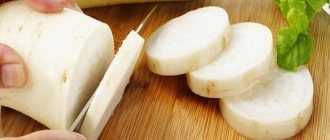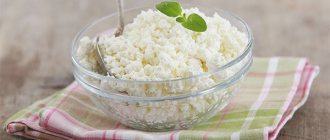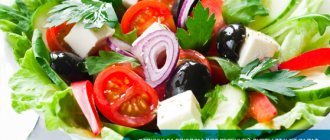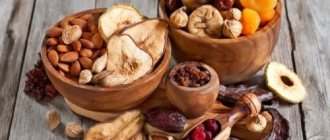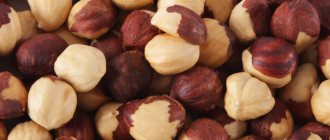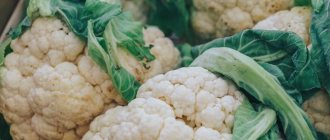Cottage cheese is a unique dietary product. Due to its high content of calcium and milk protein, it is ideal for feeding children and athletes, pregnant women and nursing mothers, people with reduced immunity, and anyone who is watching their figure.
How many calories are in cottage cheese? To this far from idle question for people losing weight, nutritionists answer that its calorie content depends on the fat content, on various additives, preservatives and other components of the product. Homemade, or rustic, is the most nutritious “young cheese”. It contains from 18 to 40 percent fat, its calorie content is the highest. It can reach 260-290 kcal. While its low-fat “relative” provides the body with only 55-110 kcal.
What is the secret of the popularity of low-fat products?
In the modern era, many people pay great attention to their health, especially their weight. Following numerous diets, they choose foods with reduced calorie content. This circumstance encourages manufacturers of dairy and fermented milk products to produce food products with reduced energy value.
This trend has not spared our “old friend” - cottage cheese. The idea of making a tasty and healthy product attractive to people losing weight was embodied in the creation of low-fat cottage cheese. This product differs from the classic analogue in its lower calorie content. This is achieved by reducing the fat content in the raw material - milk. Thus, low-fat cottage cheese is obtained, the benefits and harms of which cause constant debate among both nutritionists and ordinary consumers.
Dietary properties
Fat-free cottage cheese is widely used for dietary nutrition. Experts advise carrying out fasting “curd” days to lose weight and improve the functioning of the digestive tract. A variety of cottage cheese diets have been created and widely used.
Dishes made from cottage cheese 0% are popular because it:
- Contains almost no fat or carbohydrates, has low calorie content,
- Serves as a supplier of easily and quickly digestible protein,
- It is a completely natural product.
The medicinal properties of low-fat cottage cheese are used for diabetes mellitus - the production of a diabetic’s own insulin increases.
With high blood pressure, problems with the bile ducts and liver, poor blood circulation, and heart failure, the curd menu will bring tangible benefits.
However, the low fat content raises doubts among a certain part of nutritionists about its benefits.
Features of cottage cheese production technology
As mentioned earlier, everyone’s favorite product is made from pasteurized cow’s milk. The starting raw materials are normalized whole or low-fat with the addition of buttermilk. In order to obtain cottage cheese from milk, a special starter consisting of a pure culture of lactic acid bacteria is added to the original products. Additionally, rennet, pepsin or calcium chloride solution can be administered. The curd obtained during the technological process is separated from the whey. This is a ready-to-eat product. It is packaged for sale to consumers or serves as a raw material for confectionery production. It is important to note that in the production of cottage cheese, which will not be subjected to heat treatment before direct consumption, only pasteurized milk, devoid of any microorganisms, is used.
Contraindications for use
In addition to the fact that the product can cause certain harm to the body, it also has contraindications that should also be taken into account:
- lactose intolerance. If you are intolerant, you should not consume dairy products; severe allergies and inflammation may occur. In this case, cow's milk must be replaced with soy milk;
- gastrointestinal upset, constant constipation and stomach pain. Due to the fact that cottage cheese is a protein product, it can cause constipation;
- liver and kidney problems;
- cardiovascular diseases;
- individual intolerance to this dairy product.
What indicators should good cottage cheese meet?
Cottage cheese is prepared in this classic way. The benefits and harms of fermented milk products directly depend on the raw materials, as well as on the correctness of the technological process in compliance with all controlled parameters.
A quality product must meet the following requirements:
- Protein content - 15-20%.
- Smell and taste – pure and fermented milk, foreign shades are not allowed.
- Color - white, slightly yellowish, a creamy tint is allowed. This indicator must be uniform throughout the mass.
- The consistency of the product depends on its fat content. For cottage cheese with a high fat content, a tender and homogeneous mass with a slightly spreadable structure is considered normal. Low-fat cottage cheese, the benefits and harms of which are beyond doubt, should be crumbly in consistency, slightly heterogeneous, with a small separation of whey.
- According to microbiological studies, the content of coliform bacteria (coliforms) in 0.00001 g and pathogenic microorganisms (including salmonella) in 25 g of product are not allowed.
If you have just such low-fat cottage cheese in front of you, the benefits and harms in it correspond to the standards. This means that there will be no negative consequences from eating it. An exception may be people with individual food intolerance and the presence of certain chronic diseases.
Types of cottage cheese
If we classify all types of cottage cheese according to fat content, we can distinguish the following products:
- Fat, 18%.
- Bold, 9%.
- Low-fat or fat-free, 0.1 – 1.8%.
- Peasant, 5%.
- Canteen, 2%.
- Dietary, 4-11%.
- Dietary with fruit and berry filling, 4-11%.
- Low-fat, with fruit filling, 4%.
Among the variety of these food products, you can choose cottage cheese that is acceptable in taste and quality. People who tend to count calories and meticulously plan their daily diet choose the option with lower energy value. The benefits and harms of soft, tender low-fat cottage cheese raise some doubts. Is a dietary product not inferior to its higher-calorie “brother”? Does the original product lose its beneficial properties along with the extracted milk fat? Does it acquire harmful qualities?
Classic cottage cheese and its beneficial properties
Let's think about how fatty and low-fat cottage cheese differ in composition. The benefits and harms of each product are determined by their composition.
Classic cottage cheese with a fat content of at least 9% contains the following substances, which certainly benefit the human body:
- Calcium. This mineral performs many functions in the human body: it affects muscle contraction, conduction of nerve impulses, strengthens bone tissue, helps blood clot, and much more. The peculiarity of calcium in dairy products is that it is combined with lactic acid to form lactate. This substance is available to the human body and is absorbed quite well. Maximum calcium absorption is facilitated by fat-soluble vitamin D, which is also found in dairy products with a natural fat content.
- Protein. This is the main building material. All tissues and organs of the human body are built on the basis of amino acids, which make up proteins. The peculiarity of cottage cheese protein is its digestibility.
- Therefore, it is cottage cheese that is recommended to be consumed by children, patients with metabolic disorders and the elderly. Only dairy products contain a special protein, casein, which normalizes fat metabolism in the human body.
- Vitamins. Cottage cheese is rich in various vitamins: D, E, A, B2, B1, B12, B6, PP. These nutrients contribute to the full functioning of the human body, regulating the activity of organs and systems. Vitamins E and A are natural antioxidants and prevent aging and the formation of serious diseases such as cancer.
- Minerals. In addition to calcium, cottage cheese contains potassium, iron, phosphorus, and magnesium. They all play a huge role in the functioning of the human body. Such a balanced composition dots all the i’s in the question: “Cottage cheese – benefits and harm?” The beneficial properties of this fermented milk product certainly dominate its possible negative effects.
- Unique substances - cephalin and lecithin phospholipids - are found in milk fat. They are remarkable in that they are the building material for all cell membranes and participate in the neural regulation of vital processes.
- Among other amino acids, methionine is present in cottage cheese. This special substance has a hepatoprotective effect and protects liver cells from fatty degeneration. Cottage cheese is also useful for some endocrine disorders associated with obesity, gout, and thyroid dysfunction.
The balanced natural composition of this product forces even skeptics to stop arguing about whether cottage cheese is healthy. Cottage cheese, the benefits and harms of which are incommensurate with each other, is a most valuable product for people weakened by illness, as it contributes to the speedy recovery and normalization of all the most important functions of the body.
Don't forget about the expiration date!
Cottage cheese made according to the classic recipe can be stored in the refrigerator for no more than two days at temperatures below +8˚C. After this, bacteria begin to actively multiply in the product, and processes of protein rotting occur. If you eat expired cottage cheese, you can get seriously poisoned. Be sure to pay attention to the expiration dates of the product! If the manufacturer indicates a shelf life of more than 2-3 days, it means that preservatives have been added to the cottage cheese. The only thing that can extend the life of the product is vacuum packaging. Cottage cheese can be stored in it for 30 days. An important condition is that the integrity of the packaging should not be compromised. After opening the vacuum-sealed product, it must be consumed within 2 days.
Recommendations for use
Read the label carefully . The presence of additives can be detected by the stated shelf life; in the absence of preservatives, it does not exceed 2-3 days.
A product with a “weekly” shelf life obviously contains preservatives, even if they are not listed on the label.
But even preservatives do not guarantee the absence of mold fungi or E. coli during long-term storage, so use only fresh product .
For weight loss
Low-fat cottage cheese is extremely popular among those losing weight due to the presence of protein, low carbohydrate and fat content, but getting carried away with it based on these properties is harmful .
Healthy weight loss involves a small calorie deficit, about 400-500 kcal, which will allow you to lose 21 kg per year without any special restrictions.
, normal fat content is still and the presence of fat-soluble vitamins.
In cooking
Cottage cheese dishes are very popular in cooking. You can make cottage cheese pancakes .
Rub 250 g of cottage cheese through a fine sieve, add 1 egg, 1 tbsp. l. flour (or semolina), sugar and sour cream, salt to taste.
Place the mixture in molds and bake for 20 minutes in the oven at 180°C.
Very easy to prepare cupcake . Grind 150 g of butter with 300 g of sugar, add alternately with thorough mixing 3 eggs, 250 g of 9% cottage cheese, 1 tsp. l. baking soda and 300 g flour.
Place in a greased pan and bake in the oven for 1 hour at 180°C.
2 fitness recipes with cottage cheese - casserole and spread:
In folk medicine
In folk medicine, curd compress is widely used as an external remedy.
The tumor after a bruise disappears within two days if a compress from a mixture of 2 tbsp is applied to the bruise site. l. cottage cheese with 1 tbsp. l. honey
The burn will go away without consequences if you apply a warmed cottage cheese “cake” to the burned area , changing it every few hours.
What are the features of low-fat cottage cheese?
Now let's take a closer look at what low-fat cottage cheese is. Is there any benefit or harm in this mysterious product? In fact, this cottage cheese differs from the one described above in its nutritional and energy value. In low-calorie cottage cheese, the fat content is kept to a minimum. This gives it the properties of a dietary product. This means that all or almost all milk fat has been removed from the raw material - milk - by separation. This gives people who are losing weight the opportunity to use this product and not worry about being overweight.
Diets with cheesecakes
Cheesecakes are low-calorie, so they can be eaten with many diets. Such cheesecakes can be prepared without dried fruits and reduce the amount of sugar during cooking. And to remove the fried crust, you can cook it in the oven. Almost all protein diets include non-carbohydrate cheesecakes in the menu. One or two cheesecakes for dinner or for breakfast on several days is an excellent dish. To prepare cheesecakes for your diet, you can mix in flakes and use low-fat cottage cheese.
Cheesecakes on a protein diet are not a novelty. Such diets practically minimize the consumption of carbohydrates (but do not eliminate them completely). The calorie content of one cheesecake cooked with low-fat cottage cheese and in the oven is approximately 91.5 kcal. Therefore, they can be eaten during diets.
Is low-fat cottage cheese healthy?
But have all the healing benefits of cottage cheese been preserved? Low-fat cottage cheese, together with a high-calorie component, is partially or completely deprived of the following substances and properties:
- Fat-soluble vitamins A, D, E are practically absent in low-fat cottage cheese.
- As a result, the bioavailability of calcium decreases. It is less absorbed from a low-calorie product.
- Lecithin and cephalin also disappear along with milk fat.
- The content of proteins and amino acids is slightly reduced.
Judge for yourself what low-fat cottage cheese can give to the body? The benefits or harms of reduced-calorie cottage cheese are controversial among nutritionists. Some say that this product loses most of its amazingly beneficial properties along with fat. Others argue that a light product becomes available to people with obesity and atherosclerosis. Oddly enough, both are right in their own way.
Curd cheesecakes: benefit or harm?
Whatever you say, classic cheesecakes are prepared with wheat flour and sugar. And this, in turn, already casts doubt on the benefits of the dish. Cottage cheese is truly a healthy and nutritious product that contains amino acids, vitamins, iron and calcium. Cottage cheese is also valued for its high protein content, as much as 16 g per 100 g of delicacy. However, during heat treatment, most of these properties are lost. Classic cheesecakes are usually fried in vegetable oil. That is why it is a mistake to consider this dish 100% healthy.
Of course, eating a few cottage cheese donuts with jam as a dessert is much healthier than eating, for example, a cake. But if you are on a diet and want to lose extra pounds, it is best to reduce the consumption of the dish to a minimum.
Is low-fat cottage cheese harmful?
Low-fat cottage cheese itself is not bad. When it is consumed, the body receives valuable, easily digestible protein, vitamins, microelements and other biologically active substances. But the thing is that not many people will like the “lean” taste of such cottage cheese. Some may find it empty or sour. Enterprising dairy producers quickly found a suitable solution. They began to add sugar or other sweeteners, flavorings, fruit or berry fillers to low-fat cottage cheese. Most of them are synthetic in nature and are foreign substances to the body. Think about what benefits such cottage cheese can bring to your body? Low-fat cottage cheese, the benefits and harms of which are questionable, is a product rich in flavors and preservatives. Think about it, what’s good about this “low-calorie” diet?
Due to the addition of sweeteners, the energy value of the product can exceed that of classic fatty cottage cheese. Chemical components that improve taste can create an imbalance in the body, disrupt metabolic processes and cause certain diseases. Thus, sweet deception can cause serious health problems.
Is it possible during pregnancy and lactation?
Cottage cheese should always be included in the diet of women expecting a child. The baby inside the mother needs a lot of calcium and iron. If the mother does not receive the necessary substances from food, the child will take them from the mother's body.
A nursing mother simply needs a delicious fermented milk product. After all, her baby, through breast milk, receives all the vitamins, minerals, and trace elements required for growth and development. One of the most necessary and important microelements is calcium. With its deficiency, the baby's bone and nervous systems develop with a delay. To ensure that the microelement is not removed from the mother’s bones, she must receive enough calcium from food. This is where low-calorie cottage cheese comes to the rescue.
The norm for a pregnant woman and a nursing mother is the same - 100 grams of low-fat cottage cheese per day. An increased portion can cause severe stress on the kidneys.
What do nutritionists advise?
Nutrition experts advise approaching this issue wisely. If you do not have a serious illness (atherosclerosis or kidney failure), then you should not fall into hysteria over the dilemma: what fat content of cottage cheese is better and healthier to eat? The fight against excess weight must be competent. It is better to eat classic cottage cheese, enjoy its wonderful creamy taste and enrich your body with unique natural nutrients. And you can easily burn calories by working out in the gym or jogging in a shady park. Be healthy and enjoy life!
How to cook cheesecakes
Cheesecakes are a quick and easy to prepare food. They retain a large amount of protein and nutrients. The calorie content of cheesecakes made from cottage cheese is low - 220 kcal per 100 grams of finished product. Since cheesecakes don’t weigh that much, and they themselves are quite filling, they can be included in various diets. There are even special diets based on cheesecakes, when breakfast and dinner consist only of a product based on cottage cheese.
To make cheesecakes you will need
: cottage cheese, egg, sugar, a little flour, sunflower oil, dried fruits (optional).
The cottage cheese is ground in a bowl with sugar so that a homogeneous mass is obtained, and the cottage cheese is broken into small pieces and not in lumps. Then an egg is broken into the mixture, dried fruits or finely chopped apples are added (the hostess’s imagination comes into play here). A little flour is added to the mixture so that the cheesecakes are molded and do not crumble. The frying pan is greased with oil and placed on the fire to warm up. Then cheesecakes are laid out on it, when they are browned on one side, they should be carefully turned over so as not to break them and browned on the other side. Season the finished cheesecakes with sour cream and serve.
You can also not add dough to the flour, limiting yourself to just the egg. You can make cheesecakes in the oven. There is an unlimited number of cooking methods.
